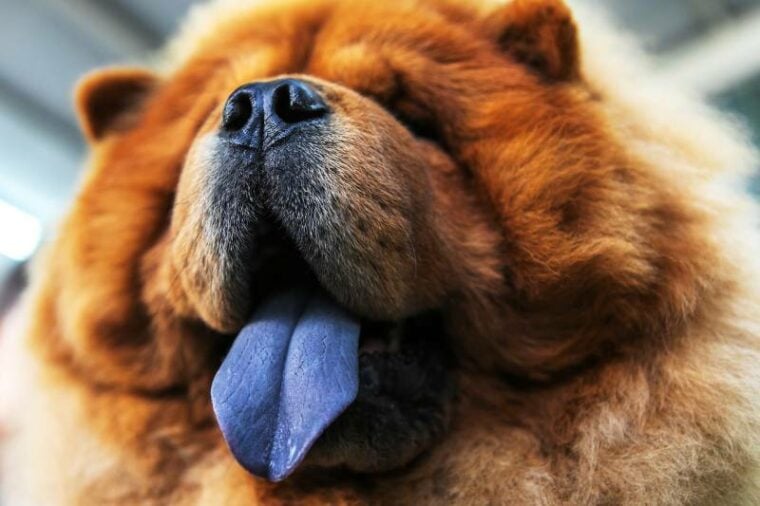
Many dogs have a pink tongue, but if yours has a blue or purple tongue, it’s more common than you think. Some dog breeds are known for having a purple tongue, such as the Chow Chow, and others may have purple spots.
However, there are occasions in which a purple or blue tongue is a cause for concern. Read more about the three reasons a dog’s tongue is purple.
The 3 Reasons Why Your Dog’s Tongue Is Purple
1. Genetics
Several breeds have a bluish or purple tongue naturally because of their breed’s distribution of melanin. This is the natural pigment that gives skin, hair, and eyes their color. In dogs, it’s normal for some areas to have dark points, such as their paws, noses, lips, and eyelids. When your dog’s tongue or gums are blue, black, or purple, it can be caused by an overproduction of melanocytes—the cells that produce melanin.
Only a few dog breeds have purple or blue tongues as a genetic trait. Chow Chows have two specific genes, ASIP and PDPK1, that relate to pigmentation. Other breeds that are known for having a black or purple tongue include the Chinese Shar Pei, the Eurasier, which can have a solid or spotted blue-black tongue, and the Thai Ridgeback.
Instead of having a purple tongue, some breeds have blue, purple, or black spots on their tongues. This is related to the melanin, but they aren’t a guaranteed breed trait like they are in the Chow Chow. Australian Shepherds, Akitas, German Shepherds, Labrador Retrievers, Golden Retrievers, Newfoundlands, Pomeranians, and Siberian Huskies may also have spotted tongues.

2. Oral Cancers
If your dog never had purple or blue spots on their tongue, or the spots have changed considerably, it could be caused by certain oral cancers like melanomas. Malignant melanomas often have black or brown pigmentation, but not always. Male dogs with heavily pigmented tongues may be more susceptible.
Some oral cancers have bumps or lumps that are raised, bleeding, or inflamed, which is cause for concern. Make sure to take your dog to the vet if you notice any changes in your dog’s mouth.
In addition to a distinct lump or bump, oral tumors will typically cause other signs like difficulty chewing or swallowing food, dropping food out of the mouth while eating, drooling, or not wanting to eat at all. Tooth loss, bad breath, and periodontal disease may also occur.
3. Cyanosis
Sometimes, a blue tongue can be a sign of an emergency. If your dog’s tongue has never been blue or purple and suddenly turns that color, particularly with difficulty breathing, this can indicate cyanosis. This happens when there is not enough oxygen being carried to the body by the red blood cells.
There are many possible causes of cyanosis, such as heart issues, blood clots, high blood pressure in the lungs, immune-mediated hemolytic anemia, pneumonia, tracheal collapse, parasite infestation, smoke inhalation, and trauma.
Regardless of its cause, cyanosis is a veterinary emergency and requires prompt treatment. Your vet will not only need to stabilize your dog but determine the underlying cause. Once your dog is stabilized, the treatment and prognosis will depend on what the root cause is and whether it can be treated effectively.

Legends About Purple-Tongued Dogs
Asian breeds with blue or purple tongues, such as the Chow Chow, have been the focus of legends going back to 206 BC China. With no explanation for this unique trait, people have come up with several fictional explanations.
One myth is that during the creation of the world, the Chow Chow had been allowed to lick up pieces of blue sky that had fallen to earth during the time when the stars were put into place. Another explanation suggests that Chow Chows got their tongues from bears due to their bear-like appearance.
Conclusion
Blue and purple tongues may be an unusual sight among the common pink tongues for dogs, but it’s often completely normal. In the case of dogs like the Chow, it’s a well-known breed trait, and with others, a fully purple tongue or dark spots are perfectly harmless expressions of the genes that created the breed.
However, a purple tongue is a cause for concern if it turns purple or blue suddenly, or if you notice new or changing spots.
Featured Image Credit: Dmitry Markov152, Shutterstock








